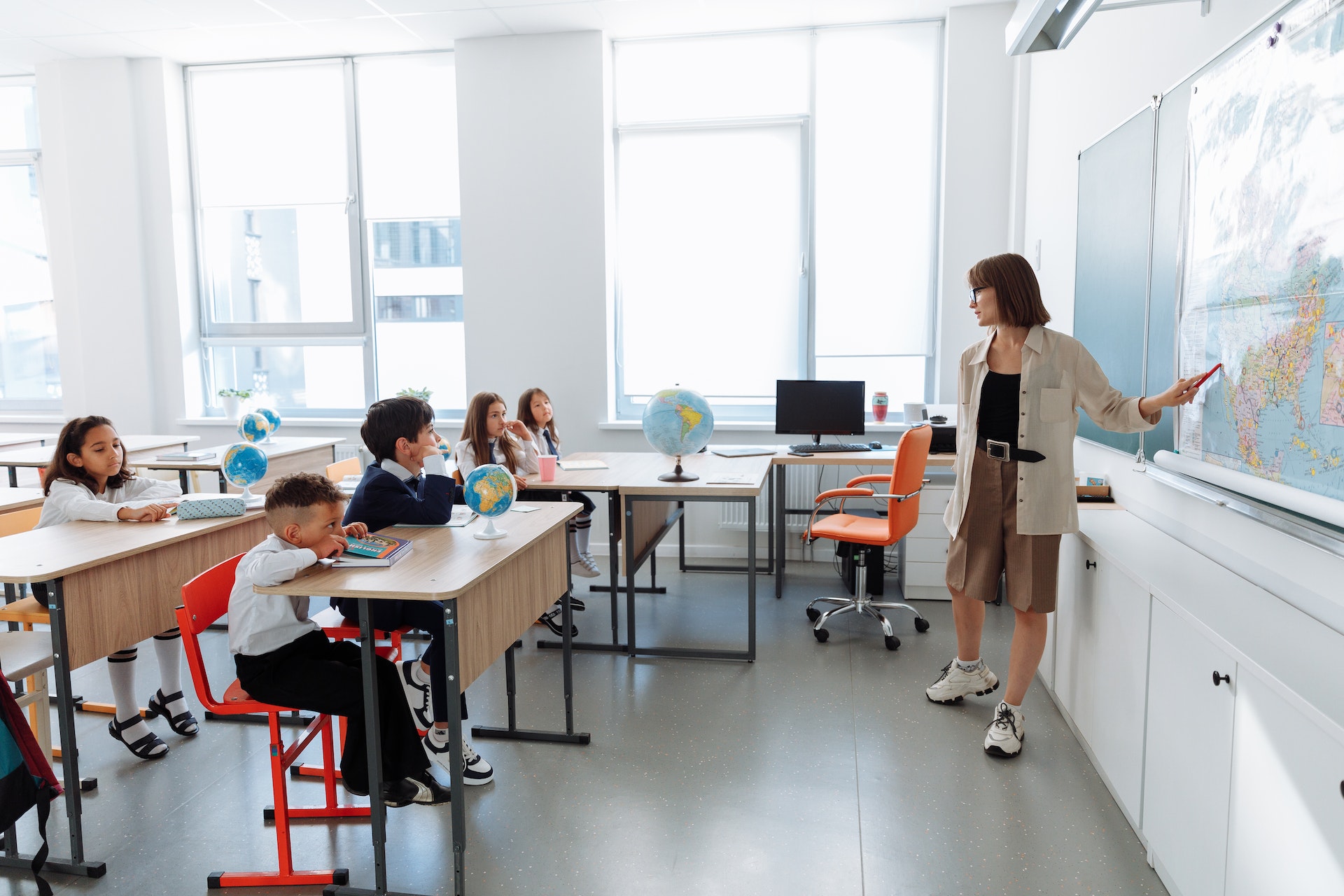Education sometimes takes place in complex linguistic environments. There may be a large body of students or even teachers who are not fluent speakers of the official language of instruction.
This is already a challenge for universities and international schools, but the stakes are even higher for state education systems that serve populations with distinct local, indigenous, or migrant languages.
For the best outcomes, action needs to occur at several levels:
- High-level language policy
- Access to language learning resources
- Special training for teachers and administrators
- Inclusive school culture and classroom management
- Participation of families and communities
- Adoption of technology
This article will deal with policy approaches and the effective provision of resources to approach this challenge.
Part 2 focuses on teacher training and the impact of community outreach.

Learn new languages smarter and faster.
Multilingual Education Policy Strategies
Whether policy is set at the national, regional, or individual school level, it has to consider the specific needs of students and teachers. In many cases, families fear that their children will lose touch with their cultural roots.
When the main language of a community differs from the language of instruction, several policy strategies are available, ranging from the highest to lowest level of intervention:
- Submersion
- Language Shift
- Bilingual Transition
- Dual Immersion
- Language Maintenance
Submersion: This approach involves limiting the use of other languages as far as possible, especially within the classroom. In its most extreme form, teachers may even be required to enforce the use of the language of instruction with disciplinary action.
Some US schools have English-only policies, with the goal of cohesion and assimilation into the dominant school community. The assumption is that other languages break immersion and slow down the English learning process, and can lead to chaotic classroom environments.
But this model has been heavily criticized for having a negative impact on pupils’ self-esteem and exacerbating performance differences, especially between pupils from different economic backgrounds.
Language Shift: This model is similar to submersion, but avoids negative reinforcement.
Other languages may be permitted, but teachers are encouraged to consistently ask for responses and contributions in the language of instruction. Teachers themselves may be forbidden from deviating from the language of instruction or be allowed to use a shared language to clarify matters for a pupil encountering difficulties.
This is the preferred approach in linguistically diverse countries like India, where many regions rely on Hindi as the dominant language of business and institutions, even where it’s not spoken in the home by the majority of families.
The biggest risk with this approach is exaggerating differences in achievement, perhaps forcing teachers to adopt a pace of instruction that suits some pupils while losing the attention of others.
One solution is to organize classes by language level, but in some cases this might create cultural separation. Therefore, this approach works best when there is an even distribution of language-of-instruction proficiency throughout the student body, rather than strongly demarcated groups, such as a majority and a minority.

Bilingual Transition: This approach gives pupils leeway to acquire core academic skills using their native languages, while gradually introducing the primary language of instruction.
The most typical form is to have specific language expectations for each year group or grade. The hope is that if some pupils are already fluent in the language of instruction, they will not be limited, while if others are falling behind, they will not feel excluded.
This model is used in regions of Canada and Mexico where indigenous languages are present and protected, and in South Africa and the Philippines, where English is established as the medium of instruction in order to improve economic opportunities.
Dual Immersion: This model considers two languages as equally valid mediums of instruction. In some cases, use of both languages in the classroom and throughout the school environment is actively encouraged.
The goal of this approach is to promote bilingualism as a favorable outcome for all pupils. It’s particularly popular in multilingual states like Belgium, and in regions of Spain like Catalonia and the Basque Country, where the local language is co-official with the national language.
It may not be effective in environments where there are clearly demarcated groups of pupils or teachers from different language backgrounds, as the differences between groups may become magnified, or one language may become dominant over the other.
Language Maintenance: This approach differs from dual immersion in its goals and accommodation of different groups in the school environment.
For example, in places like Wales and parts of Ireland, many students start school with a form of unbalanced bilingualism, while others may speak only the main language of instruction – English, in these cases. Bilingualism is not necessarily a sought-for pedagogical outcome, but the preservation of a local language may be a goal desired by the community.
To that end, additional classes may be made available in either the language of instruction (to help bilinguals keep pace with their monolingual peers), the maintained language (to recognize it and give its speakers opportunities to use it in an academic environment), or both.

How to Provide Language Classes and Resources
A multilingual school environment often demands a pace of language learning that is much more intense than ordinary language instruction.
Both pupils and teachers may require additional resources and interventions, but these can take a variety of forms:
Content and Language Integrated Learning (CLIL) is a methodology that aims to deliver both language instruction and other content in the same classroom. Traditionally, this is delivered by trained language teachers.
But an adjusted model that might suit transitioning systems is for schools to retain a few CLIL specialists whose role is to support the teachers throughout the school. This can include helping them develop lesson plans and in some cases providing one-to-one language coaching. The teachers themselves are then ultimately responsible for the language development of their pupils.
Self-paced learning tends to require a high level of motivation on the part of learners, but can produce faster results. Learners are given access to materials and then allowed to work through the content on their own schedule, perhaps supported by frequent check-ins with a teacher or language assistant.
Naturally, this system is likely to result in a wide spread of language attainment, which can exaggerate differences in overall academic achievement. At the very least, it needs support from multilingual teaching assistants who can give extra attention or interpretation to pupils who fall behind.
However, when it comes to improving the language skills of teachers, self-paced learning is perhaps the most effective approach.
Intensive programs promise rapid progress and a good level of cultural understanding, especially if delivered in an immersive environment. It can be easier for many learners to maintain their motivation level for a short course, and if the experience is a little different from their usual day-to-day, or even fun, it can aid memory formation.
In terms of delivery, immersion experiences can deliver great value for money because specialized resources can be contracted in for a specified length of time. That reduces the need to hire permanent staff to help with the language transition.
However, without ongoing maintenance, learners might not retain everything from the program. If pupils are unable to attend, they may be at a severe disadvantage compared to their peers, and if the program takes place off-site, it may require travel and accommodation that present additional costs and challenges.
Intensive programs should be seen as a catalyst or accelerant to language learning, rather than the lynchpin of a multilingual education strategy.
Parallel instruction can take place in an individualized way or in small groups, separate from regular classes.
This model allows institutions to use all of their existing resources, while bending the rules of their day-to-day pedagogic model. For example, a traditional European state school might provide free, voluntary language classes to its pupils and their parents in the evening, with mixed age groups. Instruction might be provided by the school’s daytime teachers, or not.
However, there is a risk of putting an excessive burden on learners if they feel like they’re expected to be at school all day and in the evening. One-on-one coaching in the daytime can be effective but is also quite resource-intensive, and may require pulling pupils out of regular classes for language sessions, which can disrupt lesson plans.
Progress can also be somewhat slower than with other approaches. Parallel instruction may be more suitable where the vast majority of pupils already have an adequate grasp of the language of instruction.
Regardless of format, Lingvist Classroom can be integrated to allow pupils to acquire language competencies rapidly, while giving educators visibility as to the progress of each learner.
Continued in Part 2: Training & Community





